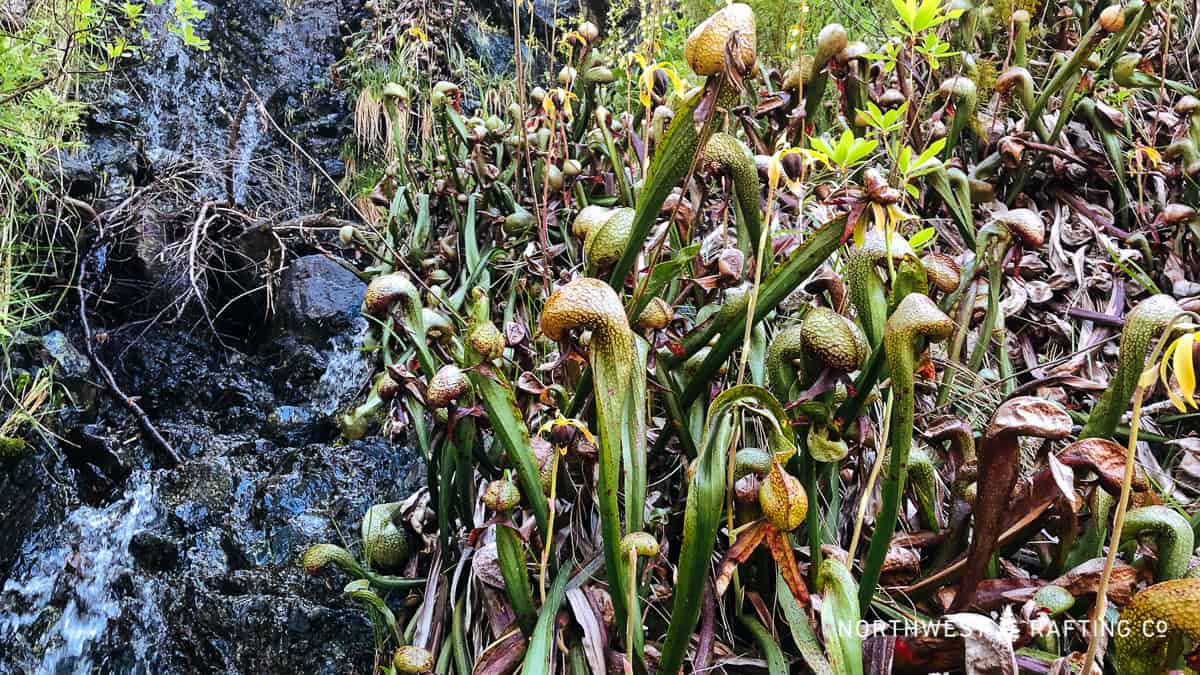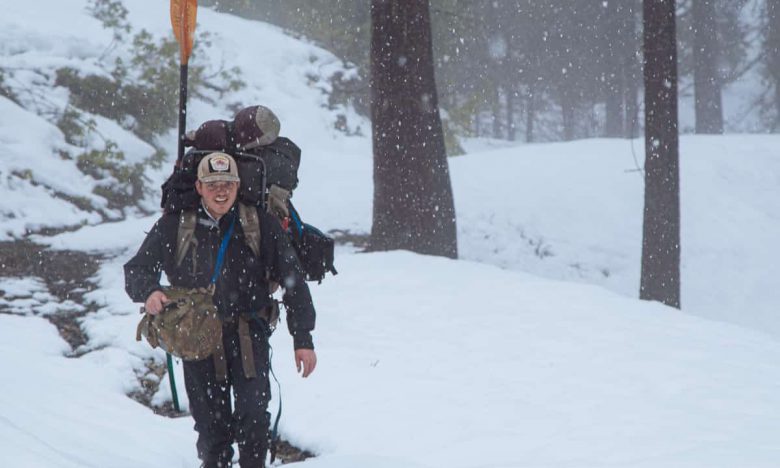Our trips on the Chetco River begin with a 10 mile hike from the east side of the Kalmiopsis Wilderness to the Chetco River at Carter Creek. From there we paddle 19 miles across this vast and dramatic federally protected wilderness. One of the best parts of these trips are seeing the many rare and endangered plants while we are hiking and paddling.
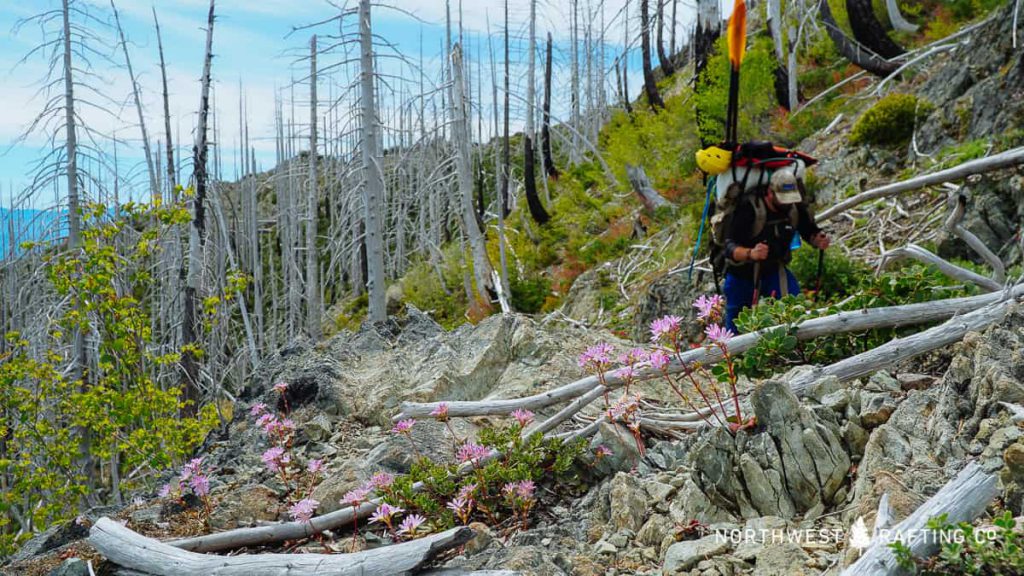
The uniqueness of the botany is due in large part to the serpentine rocks and soils of the area. These serpentine soils lack important nutrients and have heavy concentrations of heavy metals making it hard for most plants to grow. The following unique plants along the Chetco River have adapted to this unique environment.
Plants We See While Hiking to the Chetco River
Kalmiopsis Flower (Kalmiopsis leachiana)
The namesake of the Kalmiopsis Wilderness was discovered and named by pioneering botanist Lilla Leach in 1930. This rare and beautiful plant can be viewed as we do our final descent into the Chetco River near Bailey Mountain. It thrives on harsh rocky slopes where the cycle of wildfire make it difficult for less hearty plants to survive.
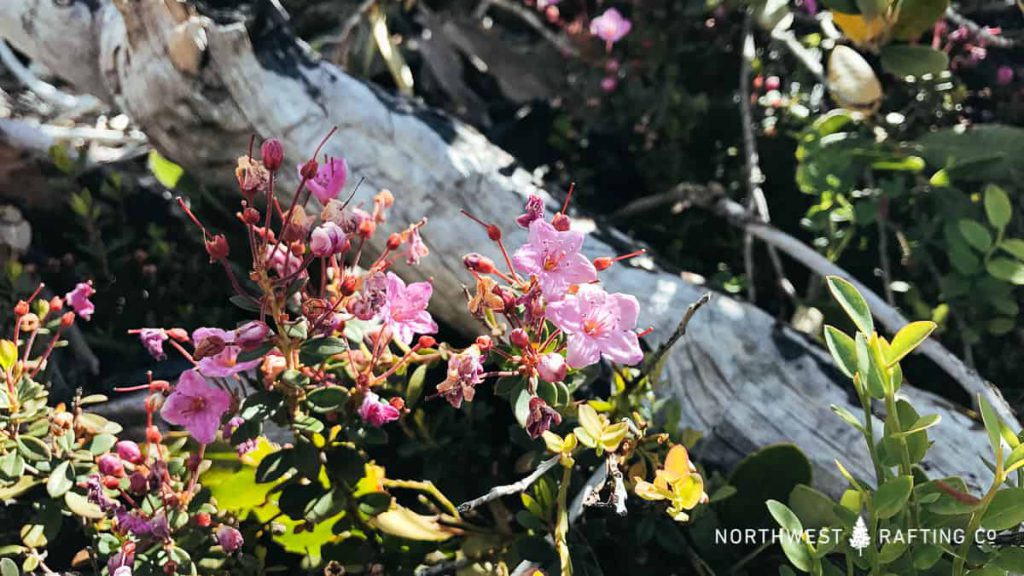
Beargrass (Xerophyllum tenax)
This plant is often the first to sprout after a wildfire. Beargrass stalks grow up to 5 feet in high alpine environments, open woods, and large dry fields. This species has long been used by Native Americans who used to weave the dried stalks into water-tight baskets and roasted the roots for food.
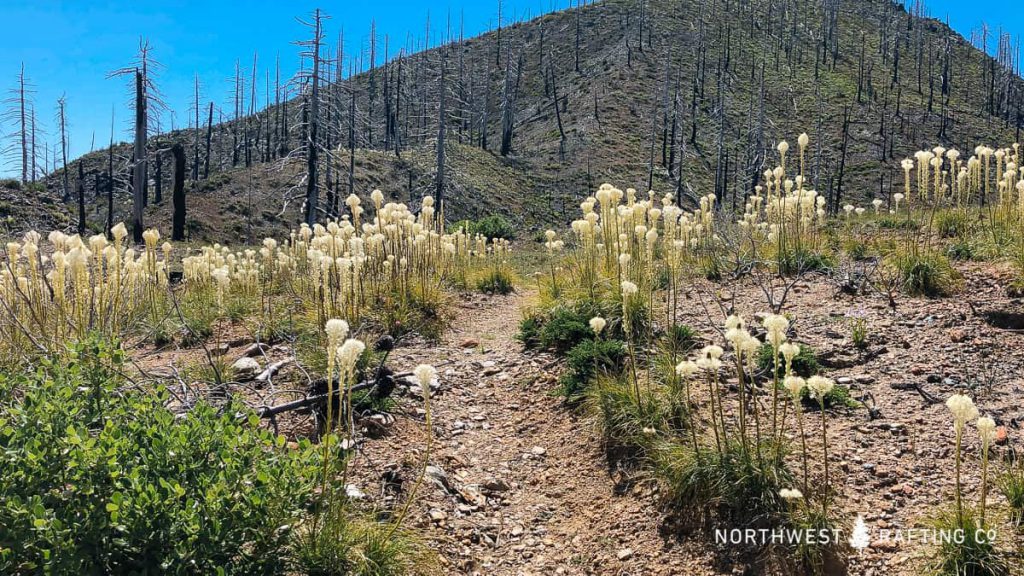
Wild Iris (Iris tenax)
Wild Iris grows in bunches along many of the trails in the Kalmiopsis Wilderness. Their colors range from white to yellow, to nearly every shade of blues and purples. These hardy, perennial flowers grow in clumps together and their leaves were historically used to make rope and string by early Native Americans.
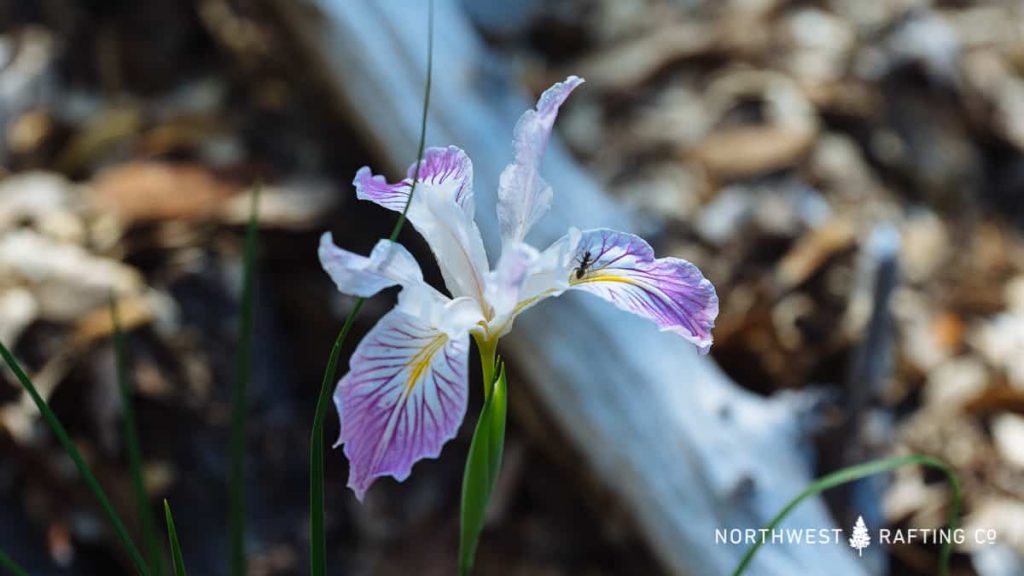
Button Rockrose (Lewisia cotyledon var purdyi)
This rare subspecies of Siskiyou lewisia is primarily found within a few miles of Babyfoot Lake where we begin our hike to the Chetco River. It grows on rocky outcroppings at higher elevations.
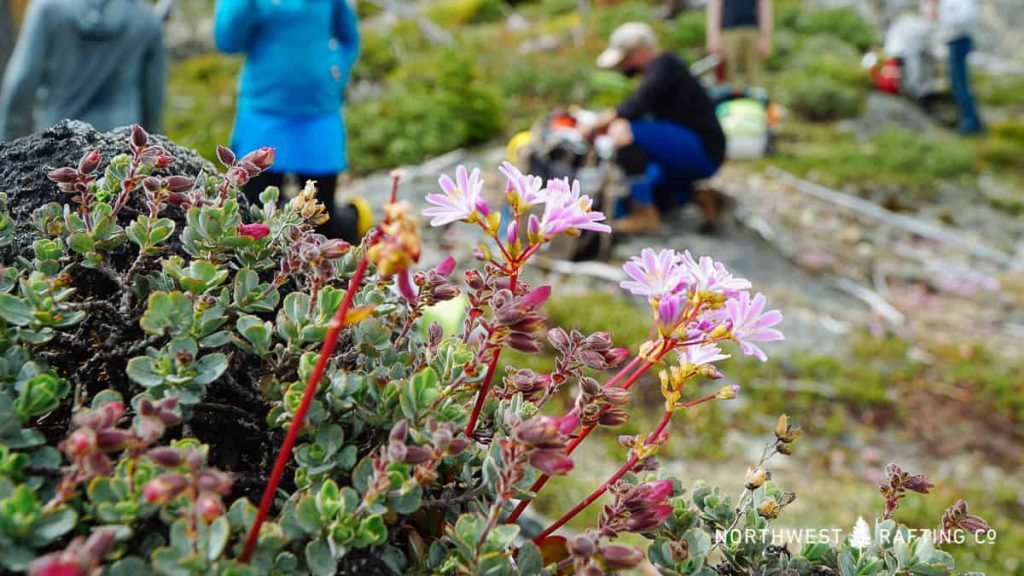
Pacific Rhododendron (Rhododendron macrophyllum)
This evergreen shrub with pleasant smelling flowers is one of only two species of rhododendron native to the west coast of North America. They grow pink or white trumpet shaped flowers from large branches and long, oval leaves. As long as its root system remains intact, this shrub can regrow from the ground if the rest of the plant has been destroyed by fire or landslides.
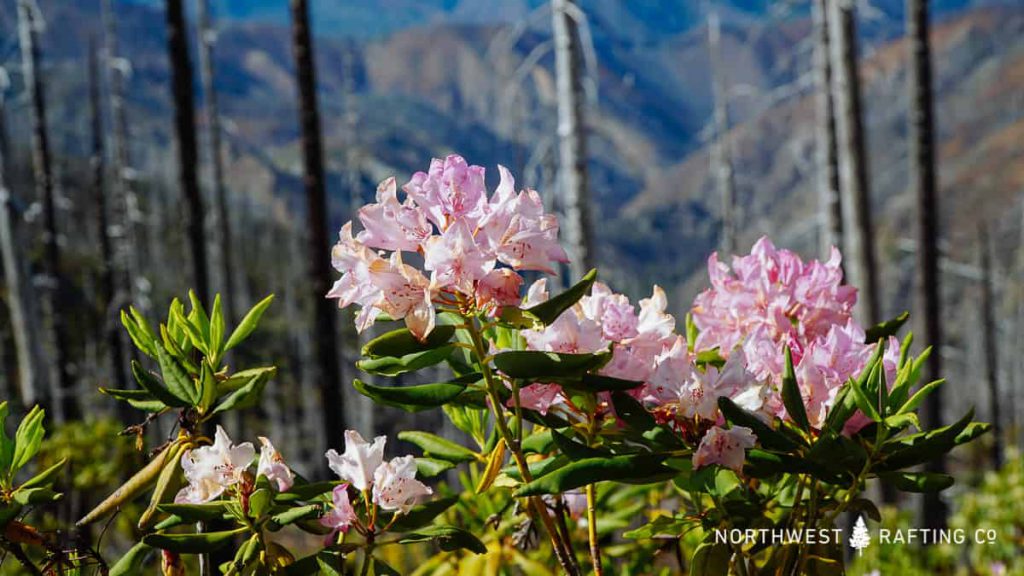
Plants We See Along the River
California Lady’s Slipper (Cypripedium californicum)
This rare orchid only grows in the Siskiyou Mountains of Southern Oregon and Northern California. The California Lady Slipper likes to grow in serpentine soil near woodland streams, seeps, and bogs. Each stem can have up to 21 “slippers.”
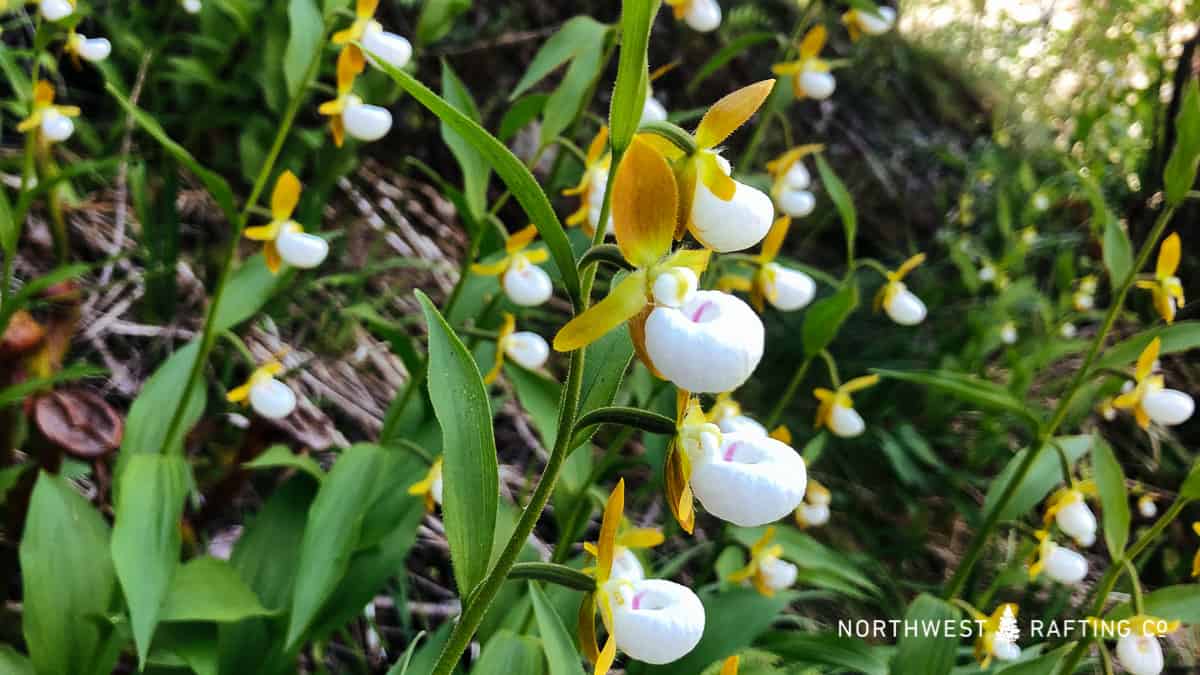
California Butterwort (Pinguicula macroceras)
The Butterwort is a carnivorous perennial herb with sticky, slimy leaves that attract insects that get stuck on the leaves. The leaves have tiny hairs that draw the prey back towards itself and glands that digest the prey. These plants are only found in wet serpentine environments, alongside rivers or streams where few other plants can survive.
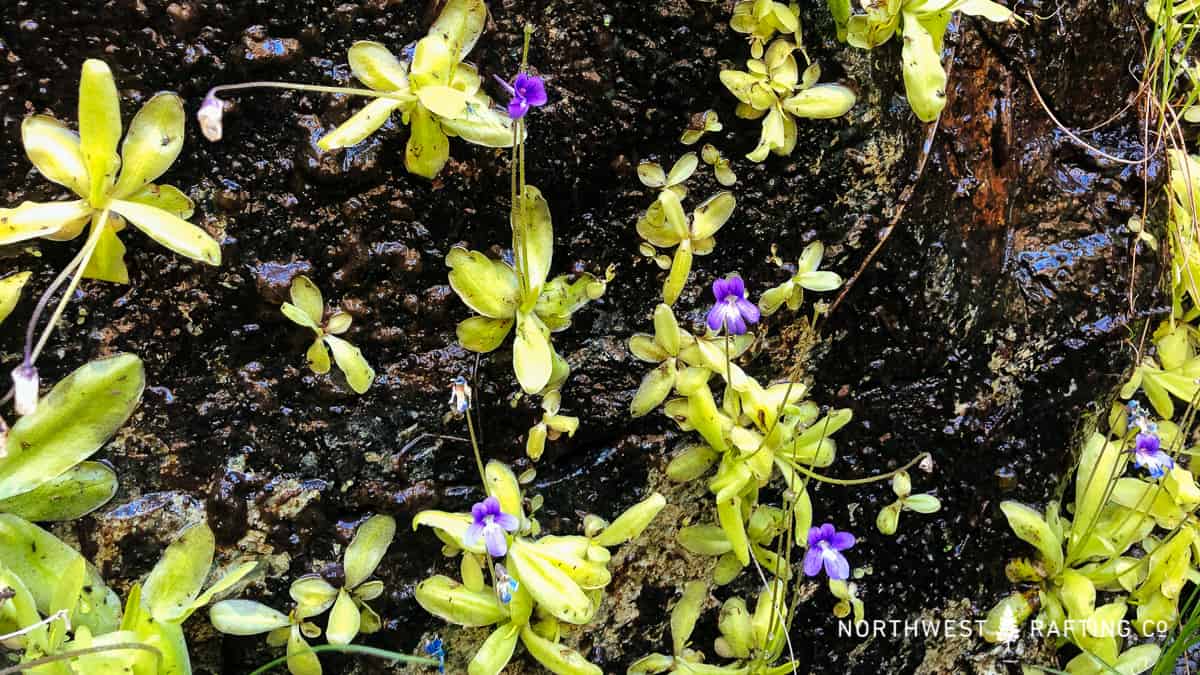
California Pitcher Plant (Darlingtonia californica)
These carnivorous plants supplement their nutrient needs by digesting insects caught in their “pitcher.” When insects fly into the top of the plant they become trapped inside the slippery, hairy plant. They grow in cold water seeps and pull water up from their roots to fill with liquid that insects fall into where they are broken into nutrients by enzymes.
